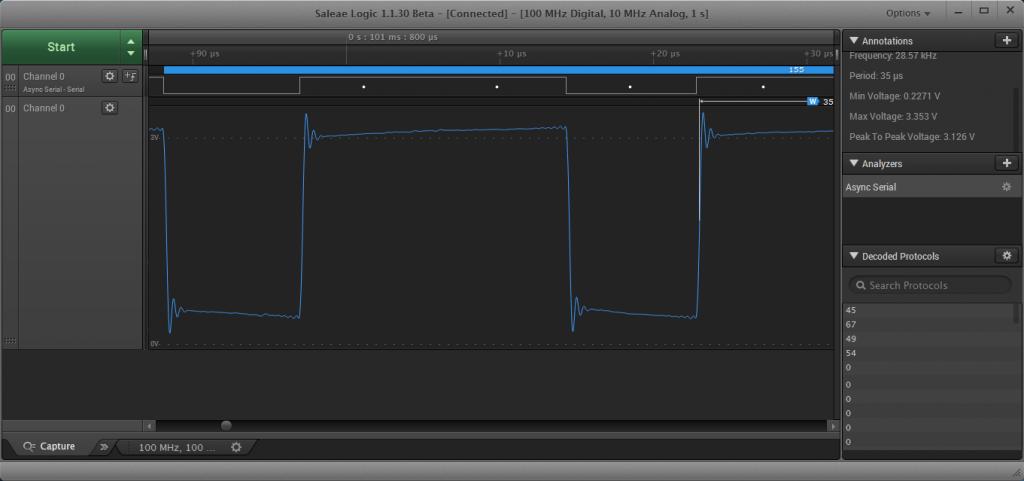Overshoot / ringing on TTL serial signal - OK or not?
Attached is a scope cap showing some overshoot/ringing at transitions. Is this the Gibbs Phenomenon my searches have led me to? Should I be concerned? Would a pullup or pulldown damp this out? The scope and C3 board have a shared, single point ground and the scope probe wire is only about 6" long. The purpose of this serial link is for comms between two C3 boards; the scope captures show no difference whether the two are connected or not.
TIA, Mike
Edit: added zoomed analog trace.
TIA, Mike
Edit: added zoomed analog trace.




Comments
The signals are slow and the ringing is minimal and could be from the probe, you didn't say whether it was x1 or x10 and whether they had been compensated (trim capacitor in probe). Even if this is exactly what's there none of this will cause any problems especially at the slow speed you are running at.
Anything full-duplex in one cog cannot time accurately at higher baud rates. Use one cog for receive and one for transmit and then you can easily go into the megabaud region. The framing errors are simply from the one cog dividing it's time between two tasks and the critical one is receiving.
But you do know what I mean about the probe though, don't you? (hook it onto the probe comp signal on the scope and trim the probe's cap for a clean square wave).
Marty
Well I do have a 3M baud object that I have been meaning to tidy up for the OBEX but there's also another one already in the obex mentioned here. Comparing the two I can see mine will run faster as it is designed to operate at 100% throughput at 2M baud by partly buffering before the single stop bit that may only exist before the next character. My object also rejects false start bits and detects breaks and also rejects floating receive lines. No need to go parallel.
I still suspect the probe in your shots there because I see a droop after the ringing which doesn't look right and I didn't quite catch that you had a 6" ground lead, whoa! But still these are slow speed signals and there is nothing to be worried about.
Isn't that normal 'ringing'? After the fist rise of the start bit you would normally wait 1.5 bit periods before sensing the first data bit and 1 bit period thereafter. That avoids the area at the tranition where that little bit of ringing occurs.
For coding purposes it might easier to wait one half bit period, sense 10 bits and then mask off the start and stop bits.
As Shultz used to say on the old Hogan's Heros series. "i know nothing. Nothing!"
Sandy